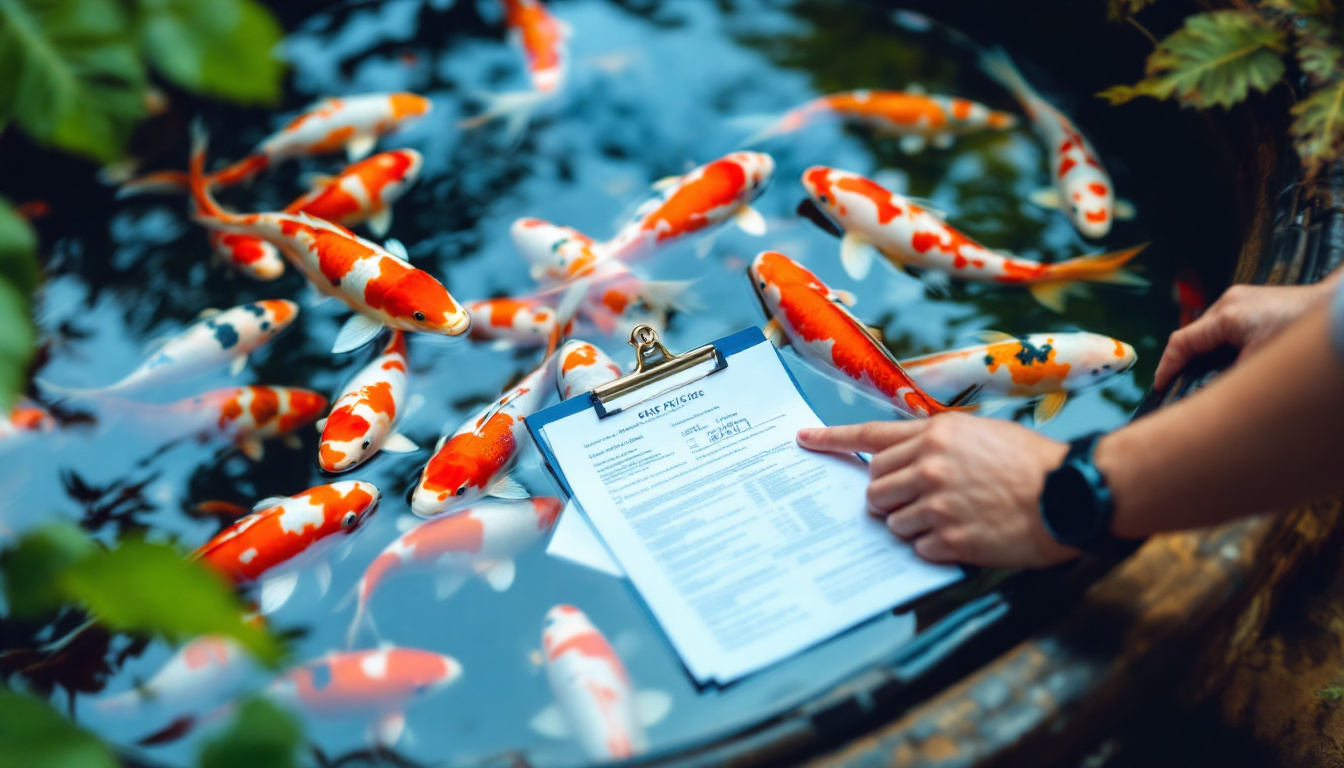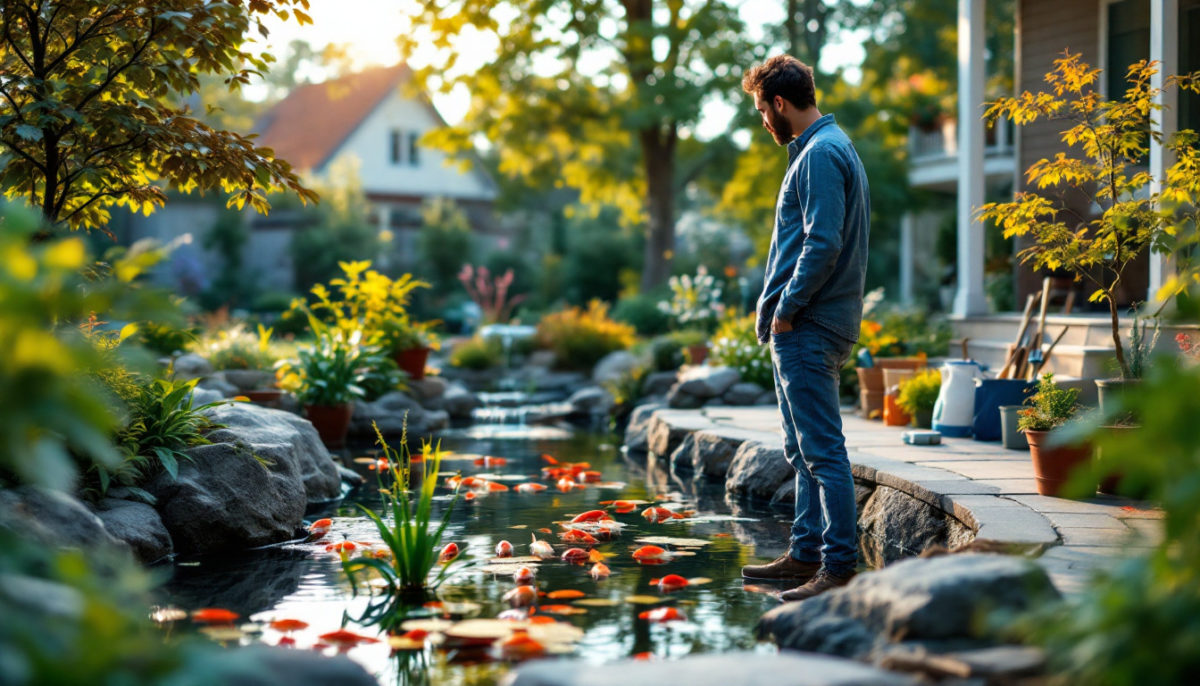So you’ve fallen in love with a property that comes with a beautiful koi pond. Those colorful fish swimming gracefully beneath lily pads certainly add a unique charm to any home. But before you sign on the dotted line, there are several important factors to consider when buying a house with a koi pond. From maintenance requirements to potential problems, this guide will help you know what to look out for in the exciting but complex world of koi pond ownership.
Understanding What You’re Getting Into
Koi ponds aren’t just water features—they’re ecosystems that require regular care and attention. Unlike a swimming pool that can be closed for the season, a koi pond is a year-round commitment, especially when live fish are involved. Many new koi pond owners underestimate the time, knowledge, and resources needed to maintain these beautiful features.

Before falling completely in love with those shimmering scales, take a moment to consider if you’re ready for the responsibility. Koi can live for decades (some even reaching 50+ years!), making them a long-term commitment that might outlast your mortgage.
The True Cost of Koi Pond Ownership
Beyond the purchase price of the home, koi ponds come with ongoing expenses. You’ll need to budget for electricity to run pumps and filters (which operate 24/7), water treatments, fish food, occasional professional cleanings, and potential repairs. Depending on the size and complexity of the system, these costs can add up to several hundred or even thousands of dollars annually.
Many homebuyers make the mistake of focusing solely on the aesthetic appeal without considering these hidden costs. A neglected pond can quickly become an eyesore—or worse, a liability—so understanding the financial commitment upfront is crucial.
Equipment replacement is another significant expense that often catches new pond owners off guard. High-quality pumps typically last 3-5 years before requiring replacement, while UV sterilizers and other specialized equipment may need updating every few years. Even the most durable pond liners eventually deteriorate, with replacements potentially costing thousands depending on your pond’s size. Creating an annual maintenance fund of at least $500-1,000 is advisable to cover these inevitable expenses without financial strain.
Time Commitment
Even with the best equipment, koi ponds require regular maintenance. Weekly tasks typically include checking water parameters, removing debris, inspecting fish for signs of illness, and managing plant growth. Seasonal maintenance is more intensive, with spring and fall typically requiring deeper cleanings and system checks.
If you travel frequently or don’t enjoy outdoor maintenance tasks, you’ll need to factor in the cost of hiring a professional pond service.
The learning curve for proper pond maintenance shouldn’t be underestimated either. You’ll need to become familiar with concepts like nitrogen cycling, beneficial bacteria colonies, water chemistry, and fish health indicators. Many new pond owners spend several hours weekly during their first year simply researching solutions to unexpected problems or identifying optimal conditions for their specific setup. Joining local koi clubs or online forums can provide valuable support, but still requires an investment of your time and attention to develop the necessary expertise for successful pond management.
Essential Inspection Checklist
When viewing a property with a koi pond, bring this checklist along to ensure you’re making an informed decision. Don’t be afraid to ask the current owner detailed questions—their answers will reveal a lot about how well the pond has been maintained.
Structural Elements
□ Check for cracks or leaks in the pond structure
□ Inspect the edging and surrounding hardscape for stability
□ Verify that the pond depth is appropriate (ideally 3+ feet for koi)
□ Look for proper drainage systems around the pond
□ Examine retaining walls or slopes for signs of erosion
□ Check that electrical installations are up to code and weatherproof
Filtration and Water Quality
□ Identify all components of the filtration system
□ Confirm that pumps are operational and appropriately sized
□ Check water clarity (you should be able to see at least 12-18 inches deep)
□ Ask about water testing procedures and frequency
□ Look for signs of algae problems or water imbalance
□ Verify that there’s adequate water circulation throughout the pond
Fish Health and Pond Ecosystem
□ Observe fish behavior (healthy koi are active and alert)
□ Look for signs of disease or parasites on fish
□ Check for appropriate fish stocking levels (overcrowding is common)
□ Identify aquatic plants and their condition
□ Ask about predator protection measures
□ Request records of fish purchases, treatments, and health history
Are the Koi Included in the Sale?
This might seem like an obvious question, but it’s one that many buyers forget to clarify until closing day. Koi can be extremely valuable—with prize specimens sometimes worth thousands of dollars each. Because of their value and the personal attachment owners develop, sellers sometimes plan to take their fish with them to their new home.

If the koi are included, make sure this is explicitly stated in your purchase agreement. Ask for documentation about each fish, including approximate age, variety, and any special care requirements. Some sellers might be willing to provide a “training session” on pond maintenance before they move out.
If the seller plans to take the fish, you’ll need to decide whether you want to purchase new koi or perhaps convert the pond to another type of water feature. Either way, having clarity on this point will prevent disappointment and confusion during the property transfer.
Does a Koi Pond Add Value to a Property?
The million-dollar question: will that beautiful water feature actually increase your home’s value? The answer is… it depends. While a well-designed, properly maintained koi pond can certainly enhance a property’s appeal, it doesn’t automatically translate to a higher resale value.
When Koi Ponds Boost Property Value
In certain circumstances, a koi pond can be a valuable asset. Luxury homes in upscale neighborhoods often benefit from distinctive landscape features that create a resort-like atmosphere. Properties in areas where outdoor living is emphasized year-round (like California, Florida, or Hawaii) may see more value from water features than homes in regions with long winters.
The quality of construction matters tremendously. Professional-grade ponds with proper filtration, circulation, and hardscaping typically add more value than DIY projects. If the pond integrates seamlessly with the overall landscape design and complements the home’s style, it’s more likely to be viewed as an asset rather than a maintenance burden.
When Koi Ponds Might Detract from Value
For some buyers, a koi pond represents unwanted maintenance or even a safety concern (particularly for families with young children). In areas where water conservation is a priority, features that require regular topping-off due to evaporation might be viewed negatively.
Poorly maintained ponds or those with obvious design flaws can actually decrease property value, as potential buyers may factor in the cost of removal or extensive renovation. Similarly, ponds that appear out of place with the home’s overall aesthetic might be seen as a liability rather than an asset.
Common Problems to Watch For
When evaluating a property with a koi pond, be on the lookout for these common issues that might require expensive repairs or redesigns after purchase.
Inadequate Filtration
Many residential koi ponds are built with filtration systems that are too small for the pond volume or fish load. Signs of inadequate filtration include cloudy water, excessive algae growth, and fish that appear to be gasping at the surface.
Ask the current owner about their maintenance routine and how often they need to clean filters. If they’re cleaning filters more than once a week or constantly battling water quality issues, the system is likely undersized or poorly designed.
Leaks and Structural Issues
Water loss exceeding normal evaporation (more than an inch per week in most climates) suggests a leak. Finding and repairing leaks can be challenging and expensive, sometimes requiring draining the pond and removing fish. Look for damp areas around the pond perimeter, settling of surrounding hardscape, or constant need for water additions.
Concrete ponds may develop cracks over time, especially in areas with freeze-thaw cycles. Liner ponds can develop tears or may have been installed without proper underlayment, leading to punctures. Either scenario typically requires significant reconstruction.
Predator Vulnerability
Koi are beautiful—and unfortunately, they’re also delicious targets for local wildlife. Herons, raccoons (if you are in America !), and other predators can quickly decimate a koi collection. Examine the pond for appropriate protective measures like netting, decoys, or depth zones that give fish places to hide.
If the pond is very shallow (less than 2 feet deep) throughout or lacks hiding places, you may need to invest in additional protection or even consider deepening sections of the pond—a major undertaking that could cost thousands.
Final Thoughts Before You Dive In And Buy a House With a Koi Pond
A home with a koi pond can provide years of enjoyment and create a tranquil outdoor space that becomes your personal oasis. The gentle splashing of water and the flashes of orange, white, and black as koi glide beneath the surface can transform an ordinary backyard into something extraordinary.

However, this special feature comes with responsibilities that not every homeowner is prepared to take on. By thoroughly inspecting the pond, understanding the ongoing maintenance requirements, and clarifying exactly what’s included in the sale, you’ll be able to make an informed decision about whether that beautiful water feature is an asset or a potential headache.
If you decide to take the plunge, consider connecting with local koi clubs or pond maintenance professionals before closing. These resources can provide invaluable guidance as you begin your journey as a koi pond owner. With proper care and attention, your new aquatic feature could become your favorite part of your new home!
Also Read
See more Helpful Content
Visit our Homepage

